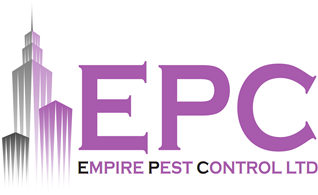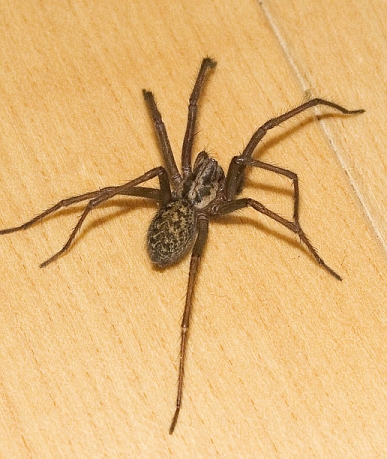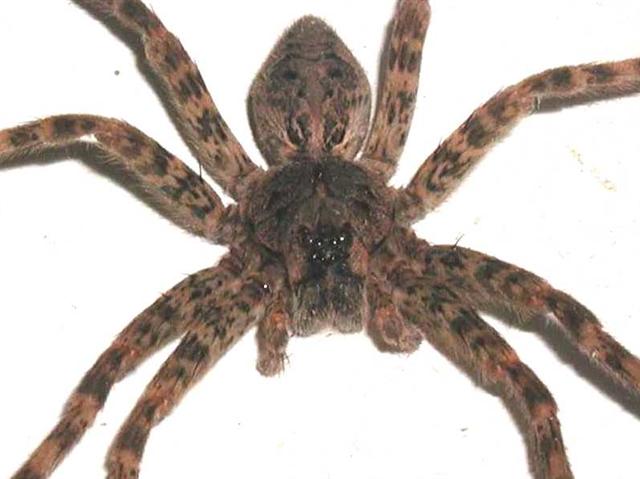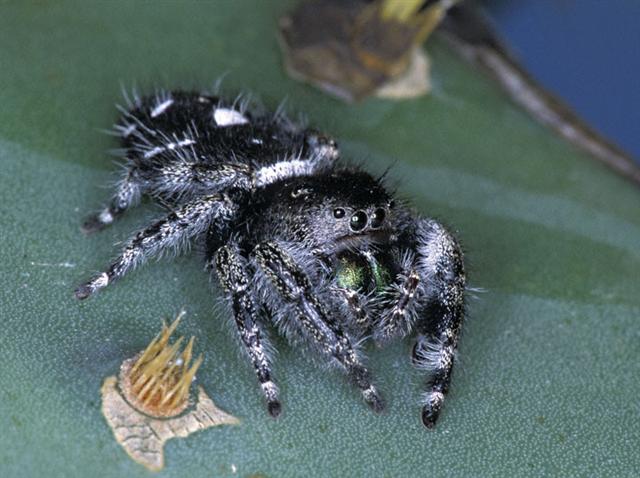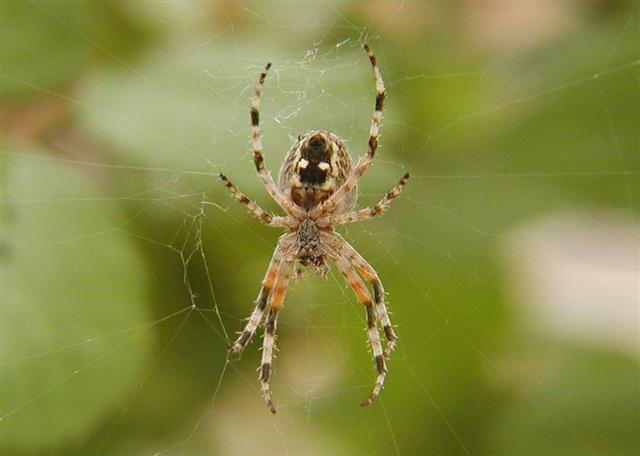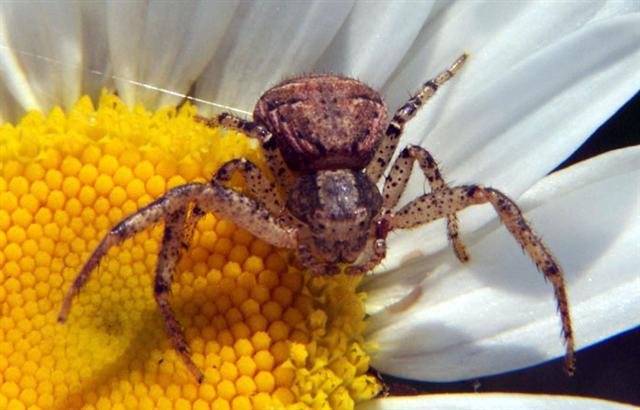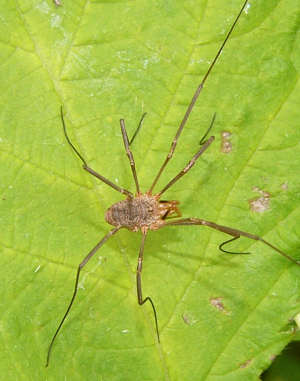ORDER: Araneae
FAMILY: Araneidae
Any arthropods that share the same characteristics as spiders are known as arachnids. Other arachnids, or spider relatives, include ticks, daddy-long legs, scorpions, and mites. The difference between spiders and insects is that all spiders can produce silk throughout their lifetime. However, just a few insects can produce silk, and then at only certain times during their life. Spiders use silk to build webs and other types of snares and egg cases. Spiders are predators, feeding mainly on insects. Spiders are considered beneficial because of the large number of insects they prey on, including a number of pest species. All spiders have venom and are therefore venomous. However, most spiders are harmless to people. They are very shy and usually remain hidden in undisturbed areas. Many are active only at night. They are not aggressive and they will try to escape when confronted. Few spiders bite, even when coaxed. Fortunately, the bites of most spiders are less painful than an average bee sting.
Wasp Spiders are like all orb-weavers, not poisonous for us. The adult female has a shining silvery head and a yellowish abdomen with black and white bars across it. The adult female is much larger than the male, measuring approximately 14-17mm compared to the males 4-6mm. When the female is loaded with eggs she becomes enormous in size. Wasp Spiders can be easily identified by the zigzag of white silk in their webs. In July the males mate with the females and often loose their life or some legs after their ‘duty’. The female makes a brown cocoon one month after mating and the young spiders hatch the next year in spring. The female dies in the winter. The just hatched spiders are very small but already have all the features as the adult spiders.

